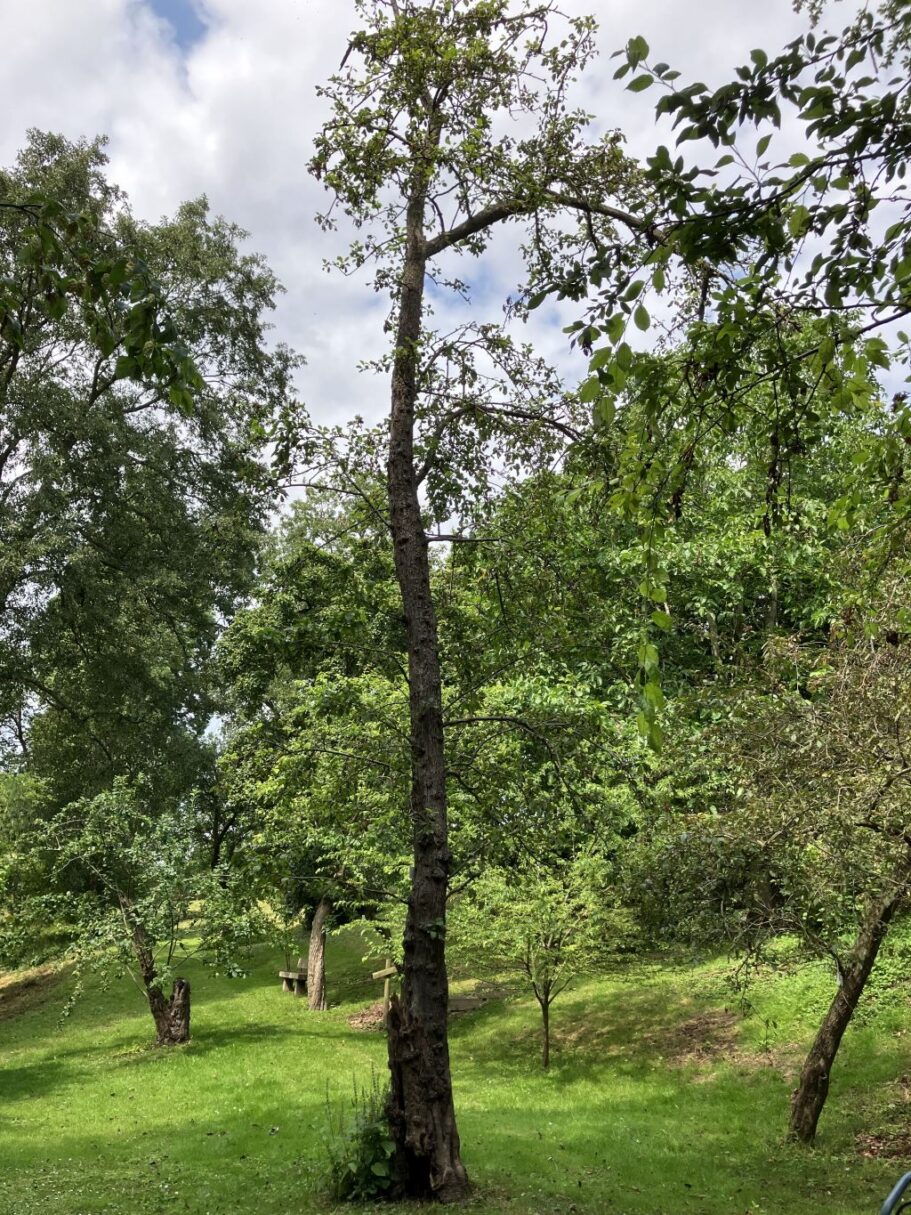#123 CHINESE PLUM LEAVED CRABAPPLE
Malus prunifolia ‘Coccinea’

This tree can be found at the east end of the Malus Avenue.
County Champion
Introduction Date: circa 1758 Grown in European gardens before it had been described scientifically, supposedly introduced from Siberia.
| Distribution: | Origin obscure probably Chinese where it is widely naturalised. |
| Planting Date: | 1922 |
| Bought from: | J Cheal and Sons, Lowfield Nurseries, Crawley |
| Growth Habit: | Small tree to 10 m. Branchlets greyish, robust, with dense, fine hairs when young. |
| Leaf: | Blade is ovate to elliptic, 5 cm to 9 cm by 4 cm to 5 cm, sparsely hairy on veins beneath when young, base cuneate, apex acute to acuminate, margin with small teeth; petiole 1 cm to 5 cm, with dense, fine hairs at first. Inflorescence a 4 to 10-flowered corymb, 4 cm to 8 cm across; pedicels 2 cm to 3.5 cm, finely hairy. |
| Flowers: | Pinkish in bud, but becoming white when they bloom. Each flower is 4 cm to 5cm across, consisting of 5 white petals, 5 light green sepals that are joined together at the base, about 20 stamens with pale yellow anthers, 4 to 5 styles, and an inferior ovary. The sepals are about 8 mm in length, lanceolate-triangular in shape, and short-pubescent along their outer surfaces. After the blooming period, withered remnants of the sepals persist on each pome. The floppy pedicels are 2 cm to 5 cm long, light green to pale red, and nearly glabrous. The flowering period occurs during mid- to late-spring for about 2 weeks. |
| Fruit: | Yellowish or red, ovoid, 2.5 cm to 3 cm diameter. |
| Tree height and girth in 2023 | Height 9.8 m and girth 106 cm |
| Uses: | Heavy cropper of red or yellow fruit, which tends to be produced in alternate years, but a disease-prone species. Grown as a rootstock for grafting. Hard dense wood good for turning. |
| Anecdotes and Comments | In 2023 rated County Champion by girth by The Tree Register |